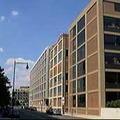
Our Location at MIT
E17-361, 40 Ames St
Kendall Square
Cambridge, MA
seari@mit.edu
617-324-0473



In order to best address the Initiative's stated mission, SEAri invites interested parties to consider sponsoring research. Past sponsors have included organizations from industry and government with an interest in systems engineering research, either in general or involving a specific research question.
Interested in sponsoring research?
Potential benefits include:
Please contact the SEAri Leadership for more information.
AGI delivers mission-proven software for timely and cost-effective development and deployment of advanced space, defense and intelligence applications. AGI products are used for modeling, engineering and operations in the areas of space, cyberspace, aircraft, missile defense, C4ISR and electronic systems. (source: www.agi.com)
AFHSIO
AFOSR continues to expand the horizon of scientific knowledge through its leadership and management of the Air Force’s basic research program. As a vital component of the Air Force Research Laboratory (AFRL), AFOSR’s mission is to support Air Force goals of control and maximum utilization of air, space, and cyberspace.
Headquartered in Cambridge, Massachusetts, Draper Laboratory is a research and development laboratory, employing more than 750 engineers, scientists, and technicians on a broad array of programs for government and commercial sponsors among its 1,025 employees.
DARPA's mission is to maintain the technological superiority of the U.S. military and prevent technological surprise from harming our national security by sponsoring revolutionary, high-payoff research bridging the gap between fundamental discoveries and their military use. Over the years, DARPA has worked to enhance our national security by funding research and technology development that not only have improved our military capabilities but have changed the way we live. Since the very beginning, DARPA has been the place for people with innovative ideas that lead to groundbreaking discoveries.
LAI is an evolving learning and research community that brings together key aerospace stakeholders from industry, government, and academia.
The Portuguese Government, through the Ministry of Science, Technology and Higher Education, is entering into a long-term collaboration with the Massachusetts Institute of Technology (MIT) focusing on basic research and education. The collaboration focused on engineering systems gives emphasis to large-scale systems that not only have critical technological components, but also have significant enterprise and socio-technical level interactions that call for engineers in leadership positions to have training in engineering systems that goes beyond traditionally defined engineering disciplines.
The Program on Emerging Technologies (PoET) is a collaborative effort between the School of Engineering and the School of Humanities, Arts, and Social Sciences (SHASS) at MIT, involving the Technology and Policy Program within the Engineering Systems Division, the Center for International Studies, the Department of Political Science, and the Program in Science, Technology and Society. PoET was recently awarded a 5-year grant by the National Science Foundation’s Integrative Graduate Education and Research Traineeship (IGERT) Program. PoET is designed to bring together engineering and social science faculty as well as students.
The MITRE Corporation is a not-for-profit organization chartered to work in the public interest. As a national resource, we apply our expertise in systems engineering, information technology, operational concepts, and enterprise modernization to address our sponsors' critical needs.
NPS provides high-quality, relevant and unique advanced education and research programs that increase the combat effectiveness of the Naval Services, other Armed Forces of the U.S. and our partners, to enhance our national security. Established in 2003, Naval Postgraduate School's Acquisition Research Program (ARP) provides leadership in innovation, creative problem solving and an on-going dialogue, contributing to the evolution of Department of Defense acquisition strategies. Each May the ARP hosts an Annual Acquisition Research Symposium in Monterey, California which draws a diverse audience of influential attendees from academe, government, and industry who are well placed to shape and promote future research in acquisition.
The Norwegian University of Science and Technology (NTNU) is Norway's primary institution for educating the nation's future engineers and scientists. The university also has strong programmes in the social sciences, teacher education, the arts and humanities, medicine, architecture and fine art. NTNU's cross-disciplinary research delivers creative innovations that have far-reaching social and economic impact.
Established in 1972, DSO National Laboratories (DSO) has evolved into Singapore’s foremost applied R&D organization with more than 900 research scientists and engineers under its wings.
The Systems Engineering Research Center (SERC), a University-Affiliated Research Center of the US Department of Defense, leverages the research and expertise of senior lead researchers from 20 collaborator universities and not-for-profit research organizations throughout the United States. SERC is unprecedented in the depth and breadth of its reach, leadership, and citizenship in Systems Engineering. Led by Stevens Institute of Technology, and principal collaborator, the University of Southern California (USC), the SERC provides a critical mass of systems engineering researchers: a community of broad experience, deep knowledge, and diverse interests. SERC researchers have worked with a wide variety of domains and industries, and so are able to bring views and ideas from beyond the traditional defense industrial base. Establishing such a community of focused SE researchers, while difficult, promises results well beyond what any one university could accomplish.
[The] focus in ERS is to develop engineering concepts, science, and design tools to protect against malicious compromise of weapon systems and to greatly enhance the manufacturability of trusted and assured defense systems across the acquisition life cycle. Through the ERS initiative, the department is developing an integrated suite of computational modeling and simulation capabilities and systems engineering tools, complete with an open-reference architecture, directly aligned to acquisition and operational business processes. The R&D investment in ERS focuses on infrastructure, information, design support, highly robust tradespace analytics, decision support tools and knowledge environments to increase the speed and efficiency of system development, improve the effectiveness of fielded systems and provide life-cycle costs for decision making.